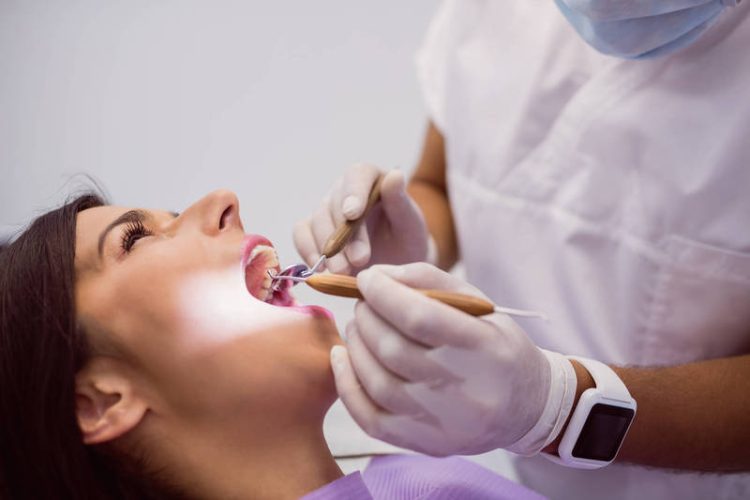Introduction
Sugar is one of the most common ingredients in modern diets. It is found in numerous processed foods, drinks, and snacks, making it nearly impossible to avoid. While sugar provides a quick source of energy and contributes to the deliciousness of many foods, its effects on oral health are far from sweet. The impact of sugar on teeth is a key factor in the development of dental issues such as cavities, tooth decay, and gum disease.
This essay will explore how sugar affects teeth, explaining the physiological processes behind tooth decay, the role of bacteria in sugar-related dental damage, and the consequences of excessive sugar consumption. Additionally, the essay will discuss various alternatives to sugar, focusing on natural and healthier options that can help maintain dental health. We will also delve into preventative measures and the importance of oral hygiene in mitigating the harmful effects of sugar. Finally, we will explore some of the most recent research and innovations in the field of dental care, helping readers understand how to protect their teeth without completely eliminating sugar from their diet.
1. How Does Sugar Affect Your Teeth?
The Physiological Process Behind Tooth Decay
The relationship between sugar and tooth decay begins with the mouth’s natural bacteria. The mouth is home to hundreds of types of bacteria, some of which are harmful. These bacteria feed on the sugars present in food and drink, producing acids as a byproduct of their digestion. Over time, these acids can erode the enamel—the hard outer layer of the tooth—leading to tooth decay. The enamel’s primary function is to protect the inner structures of the tooth, so when it breaks down, the softer dentin and pulp become exposed, which can lead to pain, infection, and, ultimately, tooth loss.
The process starts when sugar is consumed and interacts with bacteria in the mouth, which then metabolizes the sugars into lactic acid. This acid lowers the pH of the mouth, creating an acidic environment that demineralizes the enamel. Minerals such as calcium and phosphate are leached from the enamel, weakening it and making it more susceptible to decay.
The Role of Plaque in Sugar-Related Tooth Damage
Plaque is a sticky, colorless film of bacteria that forms on the teeth, especially after eating sugary foods. When left on the teeth, plaque can harden into tartar, which requires professional removal by a dentist. If plaque remains on the teeth for too long, the bacteria within it continue to feed on sugars and produce acid, exacerbating the demineralization process. Plaque also contributes to gum disease, which further impacts overall dental health.
The Timeline of Sugar-Induced Tooth Decay
Tooth decay due to sugar intake doesn’t happen overnight. It’s a gradual process that may take months or even years. The length of time it takes for sugar to affect teeth depends on several factors:
- Frequency of Sugar Intake: The more frequently you consume sugar, the more time bacteria have to produce acid. It’s not just about how much sugar you eat, but how often you consume it.
- Saliva Production: Saliva plays an important role in neutralizing acids and washing away food particles. People with dry mouths are at a higher risk of tooth decay from sugar consumption because there’s less saliva to neutralize the harmful effects of sugar.
- Type of Sugar: Simple sugars found in candies, sodas, and sweets are more quickly metabolized by bacteria, whereas complex carbohydrates such as those in bread or pasta may take longer to break down, resulting in prolonged exposure to acids.
The Impact of Sugar on Different Teeth Structures
The most vulnerable part of the tooth to sugar damage is the enamel. As mentioned earlier, enamel is the hardest substance in the human body, but once it starts to erode, the tooth becomes vulnerable to further damage. Once the enamel is compromised, the underlying dentin layer becomes exposed. Dentin is much softer and less resistant to damage than enamel, meaning decay can spread rapidly into deeper layers of the tooth.
If sugar consumption continues unchecked, the decay can extend into the pulp, leading to infection and, eventually, tooth loss. A tooth that is left untreated can require costly and painful treatments such as fillings, root canals, or extractions.
2. The Role of Sugar in Gum Disease
Gum disease, also known as periodontal disease, is another condition that is heavily influenced by sugar intake. The relationship between sugar and gum disease is complex but significant. When sugar feeds harmful bacteria in the mouth, not only does it contribute to tooth decay, but it also plays a role in gum inflammation and infection.
The Connection Between Sugar and Gingivitis
Gingivitis is the early stage of gum disease, characterized by red, swollen, and bleeding gums. It occurs when plaque builds up on the teeth and irritates the gum tissue. While poor oral hygiene is the primary cause of gingivitis, excessive sugar consumption can exacerbate the condition. The bacteria that feed on sugar in the plaque can increase the inflammatory response of the gums, leading to more severe gum disease.
The Long-Term Effects of Sugar on Gum Health
If gingivitis is left untreated, it can progress to periodontitis, a more severe form of gum disease. In periodontitis, the infection spreads deeper into the supporting structures of the tooth, including the ligaments and bone. This can cause the gums to pull away from the teeth, leading to tooth mobility and loss. Sugar consumption accelerates this process by creating an environment that encourages harmful bacteria to thrive and damage gum tissue.
3. What Are the Alternatives to Sugar for Maintaining Oral Health?
While it may be impossible to completely eliminate sugar from the diet, there are many alternatives available that can help maintain oral health. These alternatives not only satisfy the sweet tooth but also promote better oral hygiene and reduce the risk of tooth decay.
Natural Sweeteners: A Healthier Option
One of the best alternatives to sugar is the use of natural sweeteners, which have a lower glycemic index and are less likely to cause tooth decay. Some of the most common and beneficial natural sweeteners include:
- Xylitol: Xylitol is a sugar alcohol that is commonly found in sugar-free gums, mints, and toothpaste. Unlike sugar, xylitol is not fermentable by oral bacteria, meaning it doesn’t contribute to tooth decay. In fact, xylitol has been shown to promote the remineralization of enamel and prevent cavities.
- Stevia: Stevia is a plant-derived sweetener that has no calories and doesn’t raise blood sugar levels. Stevia is a safer alternative to sugar and can be used in place of regular sugar in beverages and baked goods.
- Erythritol: Like xylitol, erythritol is a sugar alcohol that is less likely to cause cavities. It also has a low glycemic index, making it a suitable option for people with diabetes.
Foods That Promote Oral Health
In addition to using natural sweeteners, incorporating foods that support tooth health into your diet is key. Some of these foods include:
- Dairy Products: Cheese, milk, and yogurt contain calcium, which strengthens teeth and helps neutralize acids produced by bacteria. These foods also promote saliva production, which is essential for washing away food particles.
- Crunchy Vegetables and Fruits: Apples, carrots, celery, and cucumbers help stimulate saliva production while providing important vitamins and minerals that support oral health.
- Nuts and Seeds: Nuts like almonds and seeds provide healthy fats, fiber, and protein, all of which can help support dental health and prevent tooth decay.
Sugar-Free Chewing Gum
Chewing sugar-free gum after meals can help reduce the risk of tooth decay by increasing saliva production, which neutralizes acids and washes away food particles. Look for gums containing xylitol, which can further help reduce the growth of decay-causing bacteria in the mouth.

4. Effective Preventive Measures for Protecting Teeth from Sugar Damage
Prevention is always better than treatment, and when it comes to protecting teeth from the harmful effects of sugar, several key habits can make all the difference.
Brushing and Flossing Regularly
Proper oral hygiene is the most effective way to protect your teeth from sugar damage. Brush your teeth at least twice a day with fluoride toothpaste and floss daily to remove plaque and food particles from between your teeth.
Regular Dental Checkups
Visiting the dentist regularly for cleanings and checkups can help catch any early signs of tooth decay before they progress. Your dentist can also apply fluoride treatments or dental sealants to further protect your teeth from the effects of sugar.
Drink Water and Rinse After Eating
Drinking plenty of water throughout the day helps keep your mouth hydrated and aids in washing away sugar and food particles. Rinsing your mouth with water after consuming sugary foods can help minimize the impact of acids and bacteria.
5. Conclusion
Sugar plays a significant role in the development of tooth decay and other oral health issues. The bacteria in the mouth feed on sugar, producing acids that demineralize tooth enamel and lead to cavities. In addition to contributing to tooth decay, sugar can also increase the risk of gum disease. However, by adopting healthier alternatives to sugar, practicing good oral hygiene, and maintaining regular dental visits, you can significantly reduce your risk of dental problems and preserve your smile for years to come.
Incorporating natural sweeteners like xylitol and stevia, along with a diet rich in tooth-friendly foods, can help satisfy your sweet cravings without compromising your dental health. By making these simple changes, you can keep your teeth strong, healthy, and free from the damaging effects of sugar.













































Discussion about this post